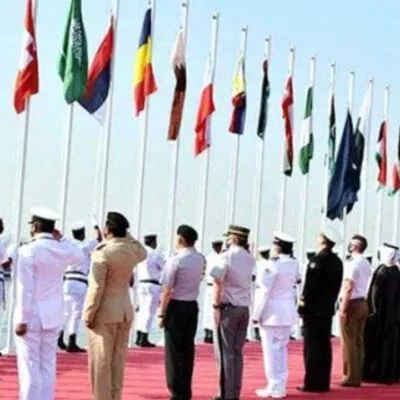With the inauguration of Joe Biden as the 46th President of the United States, new developments are underway concerning both local and international affairs. While the Biden administration is ramping up the COVID vaccine production across the United States, it is also extending out its presence in the South and the East China Sea disputes. The US has decided to support its allies Japan and the Philippines, emphasizing the importance of this alliance in strengthening the freedom of the Indo-Pacific. The previous four years of Trump’s administration were undoubtedly hard on US rivals, but they were also surprisingly rigid with US allies. Philippine believes that the new Biden administration may prove more stable and predictable, making the role of the US in the Indo-Pacific clearer. However, with the US naval fleet’s continued presence near the South China sea, clashes with China are inevitable in the future.
It is expected that Biden and his Democratic administration will view its ASEAN allies as partners.
Despite previous dissatisfactions with the US, allies including Australia, Japan, Thailand, and the Philippines are ready to renew US partnership in the face of the various security threats posed by China. The US Indo-Pacific Framework is a lengthy document developed in 2017 by Trump’s National Security Council. It states its main aim is to “maintain the freedom of navigation in seas and airspace.” Political researchers have analyzed the framework, and some deem it a good reflection of the United States’ foreign liberal policies. Primary US interests mentioned in the Indo-Pacific Framework include the prevention of the use of nuclear weapons in the region to guarantee the continuation of US military and diplomatic access to the region and maintain core US alliances in the future. Considering this, it can be expected that the US will actively partake in Indo-Pacific disputes in the future, given the opportunity to enhance its diplomatic image internationally. Another main goal of US presence in the South China sea is to emphasize US military hegemony in Asia, retreating on the threats of Chinese forces will send across a message of weakness to US allies, and this is not an option the United States wants to send in the face of growing Chinese influence in Asia and Europe.
US Freedom of Navigation Program came into existence in order to combat excessive maritime claims by China
A key pillar of US diplomacy in Asia is the Association of Southeast Asian Nations (ASEAN). Under the Trump administration, this alliance was largely neglected; in fact, a formal US ambassador to ASEAN was never confirmed. However, re-establishing strong links with ASEAN countries will be crucial for the continued presence of the US in Asia; this includes ties with Japan. A shift in perspective from US allies being treated as pawns against China is needed. It is expected that Biden and his Democratic administration will view its ASEAN allies as partners. Much of the US presence in the South and East China sea falls under its Freedom of Navigation Program, the purpose of which is to combat against states which have gone against the UN law, which lays down rules regarding the responsibilities of respective states in using the world’s free oceans. It is justifiable for other states to intercede if the right to free navigation is being suppressed. Therefore the US Freedom of Navigation Program came into existence in order to combat excessive maritime claims by China. From 2015-2017, the US has carried out five operations under the Freedom of Navigation program in the South China sea. These were carried out against the illegal demand to provide notification before innocent passage through the sea and other violations of UN Law on free sea navigation. In the past, the US has largely remained impartial regarding China’s territorial claims on islands belonging to US allies. However, with Biden’s new clearer policy on the Indo-Pacific, it seems that the US is ready to take a more active stance in support of its partners.


